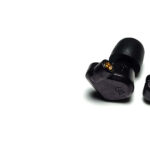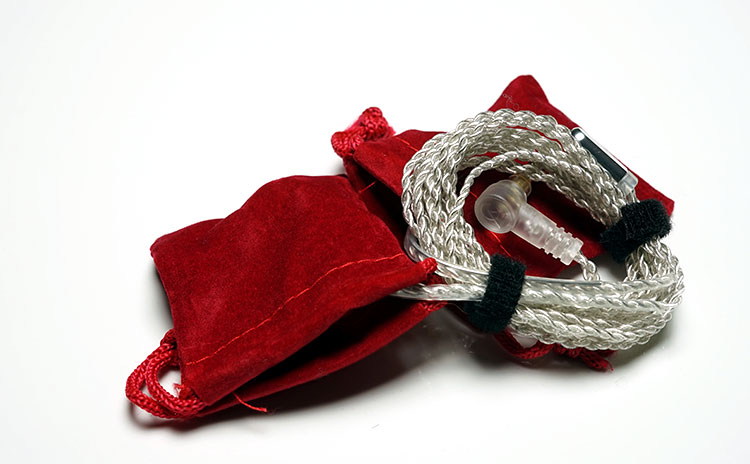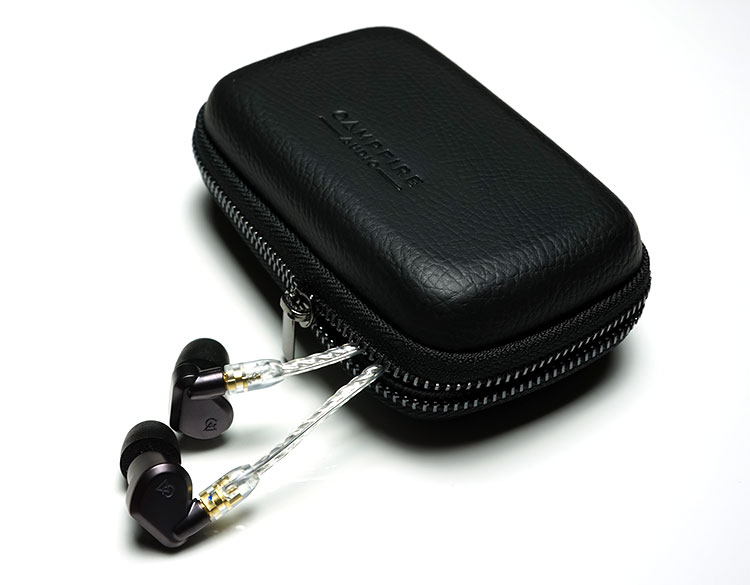The Campfire Audio Lyra II is a revised version of the original debut single dynamic driver Lyra featuring a new dynamic driver design. It is priced at $699.
Disclaimer: The Campfire Audio Lyra II sent to us is a sample in exchange for our honest opinion in this review. We thank the team at Campfire Audio for giving us this opportunity.
To read more about Campfire Audio products we reviewed on Headfonics click here.
Note, this review follows our new scoring guidelines for 2020 which you can read up on here.
Back in mid-2015, we reviewed the Lyra MK1 which was the launch IEM of Campfire Audio, backed by ALO Audio. It came out at roughly the same time as Orion and Jupiter and until then, the Vega was the only single dynamic IEM in their range.
A lot has happened since then with new cables, new designs, and some fantastic output such as the Andromeda and the Vega so I guess I am not terribly surprised that they revisited the original Lyra and brought it up to speed in 2016 (now 2017) to include a lot of new
To make it even cooler the new Lyra II is launched at $699 which is $50 cheaper than the launch price of the original Lyra.
What Is The Pitch?
Replacement
The Lyra II has been launched alongside the Vega and the Dorado as the next generation of Campfire Audio IEM designs and with the Vega, we now have two single dynamic driver IEMs in the Campfire Audio range with the Lyra II being the cheaper of the two at $699.
It also means the Lyra MK1 has been discontinued to make way for the revised version. With only the Dorado bucking the trend as a hybrid the product range is now cleanly split between the DD camp (Lyra II and Vega) and the BA camp (Andromeda, Orion, and Nova).
Harmonizing
Also, the Lyra II launch brings the Lyra “brand” up to speed with the new designs and features of the 2nd Gen launch including an all-new carry case, the little red protector pouches, a similar branded retail box, the Litz cable, and that yummy PVD finish on the new liquid metal alloy housing you can find on the Vega and Dorado.
The product line now looks very harmonized and mature indeed.
Tonal Change
It is not just a cosmetic turnover either, the Lyra II has been pitched as having some tonal improvements on the previous edition.
Campfire Audio believes that the mix of the Beryllium driver and the new liquid metal alloy housing will provide a different, more natural sound, than the previous high-density ceramic, Zirconium Oxide Ceramic (ZrO2) housing of the Lyra Mk1.
Add to that the SPC Litz cable that first showed itself during the Andromeda launch and we should be talking about a fairly different and vivid listening experience over the first edition.
One only has to check the descriptors on the old Lyra page and then on the new Lyra II page to see where the tonal change might be with the revised edition:
Lyra I
Less distortion, extended high frequency and a natural tonality.
Lyra II
A natural and dynamic sound–exceptional high-frequency extension, silky smooth mids, and deep, powerful bass response.
The words that leap out at me are right at the end with the phrase “deep, powerful bass response”. In our previous review of the Lyra MK1, we felt the bass response was full sounding yet polite and lacking in a little impact or bite so I am keen to see how this has changed on the new Lyra II.
Design
Liquid Metal Alloy
Much like the Vega (and the Dorado), the Lyra II housing is now made of a liquid metal alloy that is very robust and well-finished. Campfire Audio didn’t have to tinker too much with the Lyra MK1 formula when it comes to form factor since the original design is now being used as the blueprint for the new rollout of the other IEMs.
The key difference this time is the superior finish over the older ceramic materials and the new PVD coating on the shell. I have to admit the Lyra housing shape is more comfortable than the previous “edge” cutting on the Andromeda, Orion, and Nova.
PVD
PVD is also a more durable finish when it comes to the odd knocks and bumps than the older ceramic design so it is unlikely you will see much in the way of chips and paint scraping off in regular use.
Interrupting the otherwise monotone “dusk” colored shell is the small circular black bass port which is in the same place as the original Lyra MK1 just below the base of the stem.
Beryllium Copper
The front of the Lyra, much like the Vega is finished with a very clean engraved CA logo on the base of the plate and terminated at the top with CA’s custom Beryllium Copper MMCX connectors.
Having used these connectors quite extensively with the original Tinsel and the newer Litz cable I can testify these are pretty durable connectors and over the last year, I have not noticed any degradation or loss of signal or loosening of the connection strength.
These mating pins are built to last and are much superior to typical softer brass connectors.
Driver
Speaking of beryllium, Campfire Audio has stuck with the original driver from the Lyra MK1 which is a custom 8.5mm beryllium PVD transducer coupled with neodymium magnets pushing the voice coils at the heart of the driver.
It is a unique setup and only the Vega’s diamond driver outdoes it in the exotic stakes.
Cable
The Lyra II now comes with the 1.35m SPC Litz cable as standard which is superior to the older Tinsel cable that was bundled with the original Lyra. The SPC Litz is terminated with the same 3.5mm right angle clear plastic jack and finished with a very classy matching y-split silver metal tube and clear plastic chin strap.
I can’t overstate enough how much better this cable is, both in terms of audible improvements in the bass response as well as its easy manipulation, over-the-ear memory hook comfort and low microphonics.
It is an excellent cable bested only by the Reference 8 they sell for their IEM range as an optional extra.
Fit & Seal
Since the form factor is unchanged with the Lyra II, those migrating from the Lyra Mk1 will find similar levels of comfort and seal with its slightly angular nozzle for a relatively easy canal insertion.
Tips
Tips selection with the Lyra II is consistent with the tip selection from the Vega and Dorado with some excellent choices including foams, silicone single bore, and SpinFits. You will get some audible changes with the various tips so as an FYI this review was done primarily with the foam tips which was my own personal preference.
Seal
The seal is very good indeed and enhanced somewhat with the use of foam tips. They fit right in the first time with the medium foam tips, offer an excellent seal, great comfort, and zero accidental movements either in open or closed jaw stances.
If you have tried the Vega and Dorado, you will get no surprises with the Lyra II as they all follow the same form and function and I judge them marginally more comfortable to use than the BA lineup with its larger angular cut and heavy shell.
Accessories & Packaging
Once again, the theme is one of harmonization and if you have been keeping up to date with the previous Vega review you will be very familiar with the accessory lineup for the Lyra II because it’s the exact same in terms of accessories and packaging.
The box is unchanged in color from the Vega, being red and black with only the Lyra decal to distinguish the difference. Personally, I would have gone with a different color much like how the earlier first-gen IEMs (the BAs) came with differing colored boxes just to make them a bit more unique in the line-up.
Tip and accessory selection include:
- 4 pairs of SpinFit silicone ear tips
- 3 pairs of silicone ear tips
- 2 pairs of foam ear tips
- Detachable cable
- Zippered carrying case
- Cleaning tool
- Campfire Audio pin
- User guide
The leather case is also the same black grungy type zipper and fur-lined carry case as the Vega. It is the same excellent quality as always and great at protecting your IEM with enough room for a spare cable or set of tips.
I have spent time with the black one from the Vega and it does a really good job of hiding dirt and scrapes and is a big step up on the original Lyra MK1 case which had a very synthetic leather look compared to the rest of the line-up newer more worn look cases.
Much like the packaging though I would have liked to have seen a different color used for the Lyra case. If like me, you have to have all 3, (Lyra II, Dorado, Vega), it can be a bit of a challenge picking out which from which judged on the cases.
Also, in terms of the marketing pitch, a $699 IEM should have a different look and feel to one that is double the price. On the positive spin though you are getting accessories from a $1299 IEM with a $699 IEM so you could also argue that it is very good value. It just depends on your outlook if you are a half-empty or half-full type of person.
Sound Impressions
Summary
The Lyra II is primarily a musical dynamic driver presentation for me but unlike the Vega’s diamond DD, it’s a bit easier going than the more strident physicality of its bigger sibling’s powerful performance.
The Lyra II also has a subtle but very important tonal tweak from the original Lyra I that, for me, dramatically increases the musicality and smoothness of the Lyra II and that is the bass quality and emphasis.
It’s a little warmer, offers a better body, and switches the Lyra II’s energy from the MK1’s primarily mid-to-lower treble bias to more of a low-to-midrange presentation.
U-Shaped
Its basic tonal presentation is now more u-shaped warm to neutral frequency response with elevated sub-bass to around 100Hz mid-bass performance.
This tails off to around 1k before making way for a nicely elevated midrange and vocal presence from around 1-3k and then a slow but steady climb in energy from around 5k to around 7-8k then it drops away post 10k.
Out of that, you are going to hear a meatier low-end performance and a slightly warmer sounding dynamic driver response over the original Lyra with decent space for vocals to stand out and shine as well as a treble response that, much like the original, has good energy and a nice sparkle to it without being overcooked.
Bass
The Lyra II bass presence is a sub to mid-bass centric with a wonderfully languid but very natural warm sheen that only good quality dynamic drives can deliver. It is a substantial improvement on the lighter politer Lyra MK1 bass response which doesn’t have the same quality of extension.
There is no mid-bass emphasis here rather it is a heightened sub-bass elevation running around 10dB lower than the Vega and gently subsiding into a relatively linear fashion right into the Lyra’s midrange. It is that relative boosting right at the low end that gives the perceptibly warm character.
Sub-Bass Rumble
Sub-bass rumble is excellent actually. Modern R’n’B and dubstep genres really allow the Lyra II’s smooth but weighted extension to perform at its best.
Check out Major Lazer’s “Blaze up the fire” and “Lean on” or Beyonce’s “6 Inch” for the difference in audible sub-bass quality and how well Campfire Audio has tweaked the original Lyra’s bass response.
It is not BA tight, I do not think that was the objective with the Lyra II and as such, I can’t classify it as terribly accurate but if you are after a rich and smooth rumble with a decent pace then this is it.
Mids
The Lyra II’s lower midrange is slightly dipped by 2-3dB below its vocal and upper midrange tuning. Instruments though remaining clean and clear simply don’t overwhelm and instead are positioned to offer a better sense of space for vocals to shine and take focus on the Lyra II.
It is not overly excessive but Campfire has given just enough to resonate over the rest of the mids without pulling in the entire soundstage and closing down space.
Timbre
The timbre on the mids of the Lyra II is distinctly rich, thick noted, and easy-paced. Again, like the Vega, it is not the most accurate of timbre but it is highly soothing and fairly forgiving.
Much like the Vega the odd time I picked up a little bit of vocal sibilance but it felt very random and more akin to track recordings or source selection than any inherent driver quality. Detail and resolution on the Lyra II is a step down from the Vega but on par with the original Lyra MK1.
The original Lyra also has this slight turn of pace or energy that picked up significantly the higher up the range you went. I do not get that seem feeling with the Lyra II which feels a bit more balanced and coherent sounding in its mid-performance.
Treble
Treble on the Lyra II starts climbing around 4k and peaks around 8k before slipping down before 10k (slightly peaking at around 12k). It’s a smooth elevation, though, with no quick peaks and drops so it is not sharp or splashy sounding and won’t come across as overly strident or aggressive sounding.
Relaxed
That heavier hitting low end and thicker richer mid-performance might detract from an otherwise competent and articulate presence region.
It perhaps lacks a little bit of brilliance region sparkle to give class-leading headroom in the same vein as the Andromeda and perhaps even the Vega but it is definitely not shelved down or attenuated. More of a relaxed but clean treble performance.
Click on Page 2 below for Matching & Comparisons






